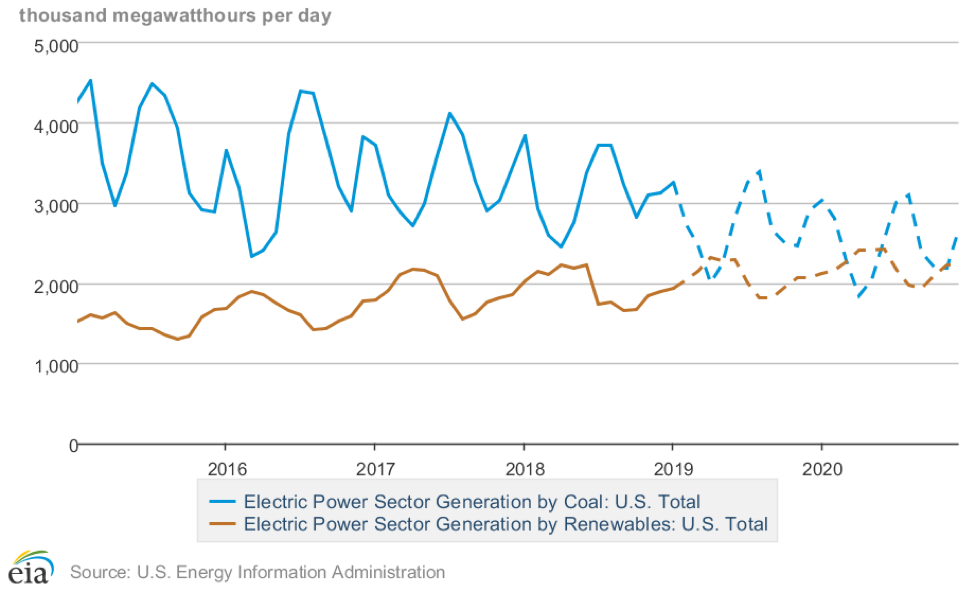Newly released report by the Institute for Energy Economics and Financial Analysis in the U.S.; shows that renewable energy—comprising of wind and solar power are—for the first time this month, set to surpass coal.
For April, renewable energy is predicted to produce 2.322 million megawatt-hours per day compared to coal’s expected output of 1.997 million megawatt-hours.
Renewables may upstage coal in May as well, although May’s difference is predicted to be slightly less drastic; with renewables generating 2.271 million megawatt-hours per day compared to coal’s 2.239 million megawatt-hours.

IEEFA U.S.: April is shaping up to be momentous in the transition from coal to renewables
The report is more bad news for the fossil fuel sector, in which—coal (even with repeated backings from Trump) had its share of total power generation drop from 45 percent in 2010 to 28 percent in 2018. And it’s expected to dip to just 24 percent in 2020.
Coal has long been the king of the power sector until it was dethroned back in 2016 by America’s fuel of choice, natural gas.
“Five years ago this never would have been close to happening,” Dennis Wamstead, research analyst at IEEFA, told CNN. “The transition that’s going on in the electric sector in the United States has been phenomenal.”
Renewable energy currently supplies about 11 percent of America’s energy while fossil fuels supply 80 percent.
Even with the rapid ingress of renewable energy, it still constitutes a relatively small portion of U.S. production and is not expected to surpass coal on an annual basis for at least several years.
But with its continued decline, more players in the fossil fuel industry are transitioning to renewable energy in hopes of ensuring their futures both economically and otherwise.
For example in March, Xcel energy – a $30 billion company that generated half of its energy using coal – announced that it will close a quarter of its plants and aim to produce zero-carbon energy by 2050.













Comments